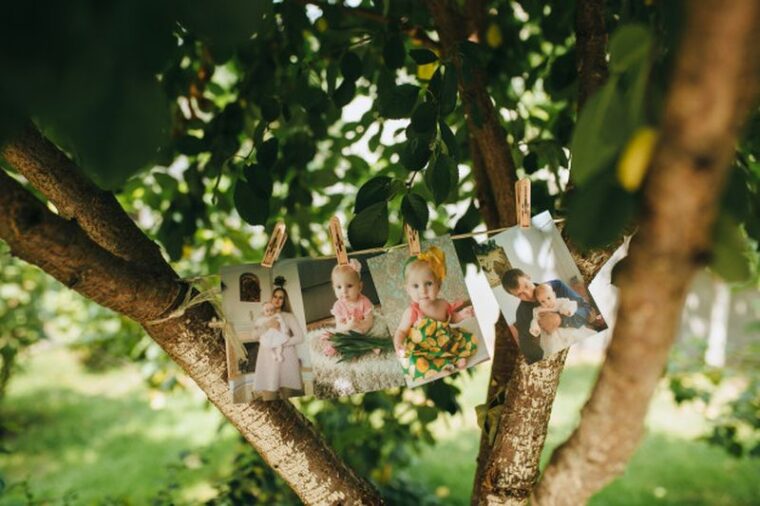Family is one of the most significant and inseparable parts of our lives, whose importance has been highlighted historically. Tracing your roots and discovering your ancestors is an exciting and fulfilling task. People have been keeping track of their genealogy for ages using different tools and methods.
Today, the most popular way of tracing one’s ancestry is through family trees. It starts with one person (usually the creator of the tree), and branches extend from there in all directions. An upward moving branch connects him with a parent, while a downward moving branch connects him to an offspring. Spouses are attached horizontally, and multiple branches give rise to a fully formed family tree.
Discovering your past with family promotes bonding and can be fun too! Head over to this website for some templates to make your own family tree.
Why do you need a family tree?

There is a sense of belonging that naturally comes with family. Children are often curious about their ancestors, and it is the parents’ responsibility to pass on this information to the next generation. Even if you don’t have kids or do not plan to have any, you might have siblings or cousins whose children might want to know their roots one day.
A family tree ensures your past is preserved and the legacy of your ancestors is protected.
Often, there are fond memories attached to deceased members of a family. By creating a family tree, you can keep these memories alive. You can rediscover your past by comparing stories and keep your tales ready for the generations to come.
If you have children, it is very important to involve them in activities like this at a young age. It helps them understand their roots, their culture while getting indulged in creative exploration. If your ethnicity or culture is different from the others in your region, this activity is a must to recognize the distinction.
Moreover, there is a sense of pride attached to the accomplishments of one’s ancestors. It drives you to be better, motivates you, and makes you live up to their achievements.
Things to keep in mind before you start

Before we start to draw our family chart, we have to keep in mind these points.
- Family trees are sometimes simple and other times complex. All family trees are in the form of charts that symbolically display genealogy. However, varying amounts of additional information can be added to these trees. Simple family trees are easy to make and don’t contain a lot of details. Complex trees, on the other hand, are more detailed. They need a lot of research and time to make. Complex family trees contain information like birth dates, death dates, hobbies, anniversaries, achievements, professions, and other details. They can even include pictures.In order to choose your tree type, you need to consider two things: the first is your priority. Is it important for you to get a large tree that includes all your distant cousins and spans a long period? The second thing you need to consider is your family itself. Are they close to each other? How much of your family are you in touch with? Can you track down more relatives?
- You have to choose the kind of information you want to include in your family tree. Some family trees are elementary and only represent branches and names, while others even mention specifics like birthdates, marriage anniversaries and death dates, and other important events.
How to make a family tree

- Research: Before you dive right into making the family tree, do thorough research about your family and pre-determine the information you plan on adding to your tree. Note this down on a paper or as a text document and refer to this while preparing the tree.
- Collect pictures: For at least 3-4 generations before you, it is possible to find photographs of your dear ones. Giving a face to a picture not only makes you feel closer to them, but it also means you can have a fun time noticing the dominant physical traits passed down from the ages. Physical resemblances can give you a sense of belongingness.
- Choose a theme: Your family members might notice certain patterns that seem to run through the family. Identify such patterns by talking to the members of your family. You can add this information to your family tree. Other themes you can follow are zodiac signs, professions, and anything you deem an important area to record and trace.
- Get creative: Family trees are pictorial depictions. The simplest trees can be made of arrows and rectangles. However, spilling your creative juice can make it much more appealing. You can harness online platforms’ features to add colors, designs, and other elements to make it look captivating. There are plenty of pre-made PowerPoint templates available to help you make attractive and creative family trees.
- Establish symbols: From the arrows to the abbreviations that will be used in your family tree, make a list of all the possible symbols in the course of the creation of your tree. Marriages, divorces, remarriages, adoptions, births, deaths, and even gender are elements that people prefer to symbolize. Birthdates, achievements, and other important information are often added to these trees. Determine which ones you want and assign symbols and abbreviations for them.People like to assign different shapes to men and women. For example, the squares are for the men of the family, and circles are for the women. Single horizontal lines connect spouses, and a kink in the middle of these indicates a divorce. However, you can make your own rules or even color code elements rather than shape-code them. Just make sure you note down the meanings of your preferred symbols.
- Leave spaces: Your family tree may not be complete, but that’s okay. You know that XYZ has three kids, but you could only collect the names of two. In such scenarios, it’s better to make three different branches coming down from XYZ even if the third one is empty. This increases the accuracy of your family tree. You don’t have to conceal the incompleteness of your tree.
Conclusion
Family is one of the closest social groups, and people have a special connection with their ancestors. Family trees make use of symbols to chart down bloodlines, and making such a tree can be a fun and educational experience for families. Most importantly, they preserve your history, which is passed on to your future generations.
